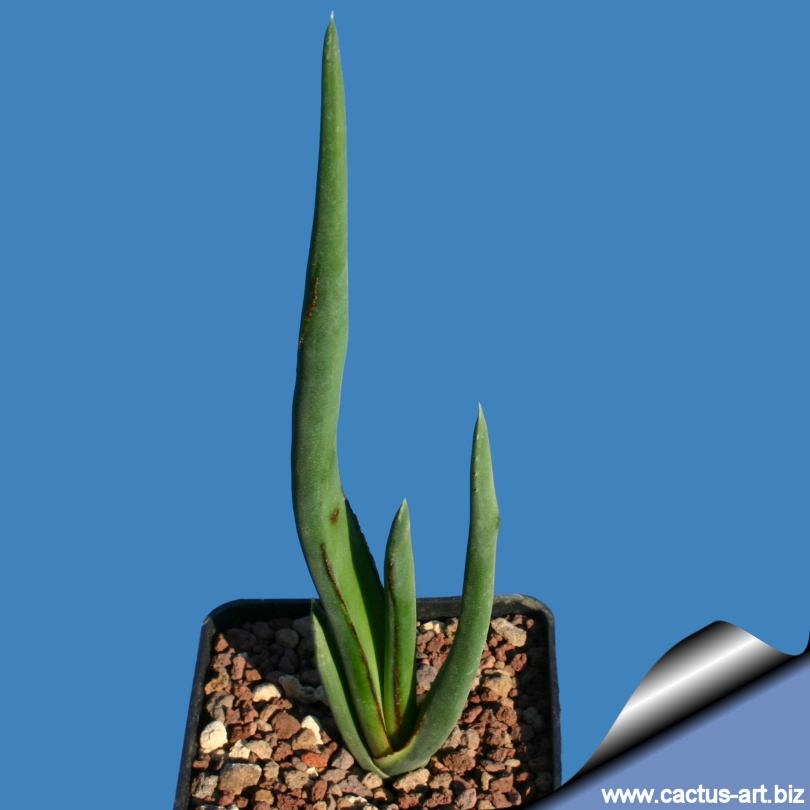|
|
|

Aloe suzannae (A youn specimen)
The species is only known from a handful of herbarium specimens
collected more than 50 years ago from areas that have subsequently
suffered considerable degradation to the natural vegetation. The Aloe
suzannae is known to exist in only about a handful of botanical gardens,
and those specimens are all less than 50 years old. The slow growth rate
and rarity of the plant make it a particularly expensive specimen.
|
|


|
|
|
|
|
Family: Asphodelaceae
Scientific name:
Aloe susannae
in: Bull. Econ. Madagascar 18 (1): 26 (1921).
Common Names include: Tree aloe
Conservation status: Listed in
CITES appendix 1.
Origin: Ambosary region and Itampolo in
Southwestern Madagascar.
Habitat: It occurs in sandy shore
or sometime on large rooks. Aloe suzannae is very
rare, it is said, there are only very few (maybe five) plant back in the
nature!
Description: It is a very slow growing tree aloe, that
stay solitary or branches at the base when it become older. This is one
of the larger Aloes, and is user-friendly (nothing sharp or dangerous).
Stem: The stem (trunk) will grow to more than 20 centimetres in
diameter and it rises to more than 3 meters (may be up to 8 m tall).
Leaves: 80-100 cm long, with rounded tips and yellowish teeth
arranged in a rosette (90-150 cm wide) at the top of the stem.
Flower: This species produces spectacular more or less erect
racemes (axillary spike) that looks like immense poles sometimes 1,5 to
6 m tall each raceme bears up to 1000 (or more) single white to
yellow-crème flowers. The perianth is regular with segments nearly free.
There are 6 stamens and a superior ovary consisting of 3 fused carpels.
This flowers are supposed to be pollinated by bats and birds.
Blooming season: Late winter or early spring. Flowering is a rare
event in this species with only maturing plants flowering
(at least 20 to 30 years old), and that is infrequent (every 3-15
years).
Fruit: The fruits normally open into 3 pieces to release the
seeds
|
|
|
|
Cultivation: It
is a versatile plant and requiring little care. It
can be grown in large containers. Always use a good quality, loamy sandy
soil with plenty of drainage chips at the bottom of containers. It
tolerates weekly watering in the summer; once a month, or not at all in
the colder months of December and January. Can withstand long periods of
drought, but they will thrive and flower more profusely if watered in
the correct season. Incorrect watering, poor drainage or too much shade
can lead to attack by pests and diseases. They can take a few degrees of
frost in winter as well, but prefer hot summers. It grows much better
outdoors in spring and summer.
In mild climates it can be cultivated outdoors for use in landscaping,
preferably planting it in hot and dry rock gardens. They will grow best
in regions with a climate close to that of their native deserts – not
too cold, and not too wet. They grow slowly, but not agonisingly so –
being able to increase their height by 5-10 cm per year under favourable
conditions.
Propagation: Almost
exclusively by seeds planted in autumn, in trays of coarse river sand.
The plant on the trade are often from micropropagation.
|
|